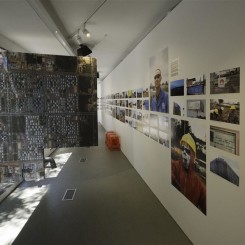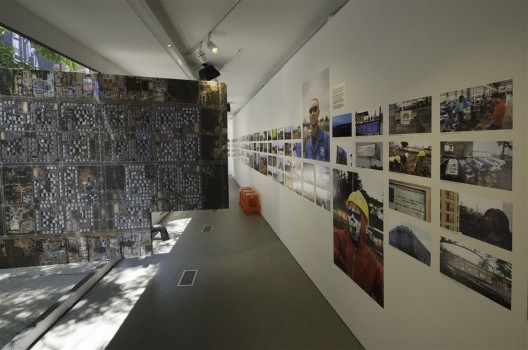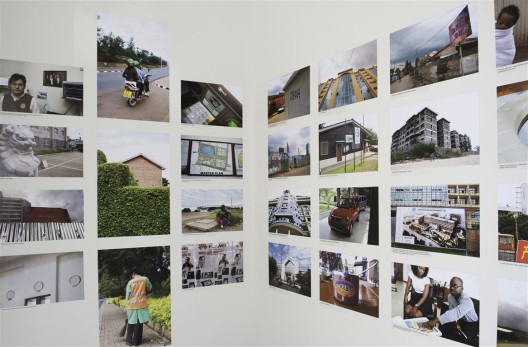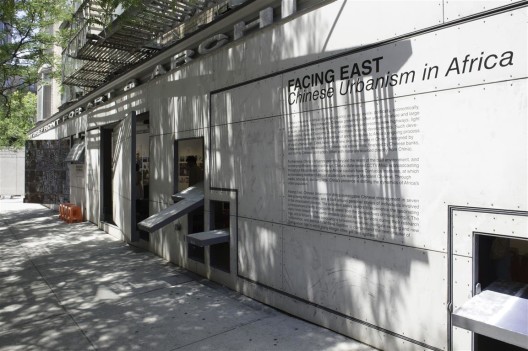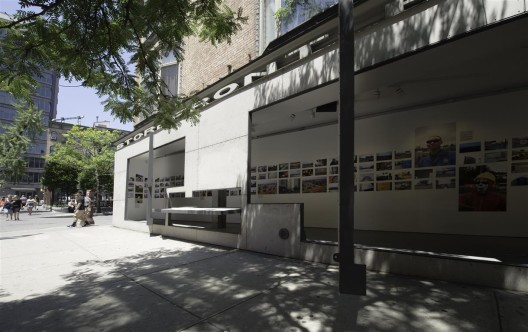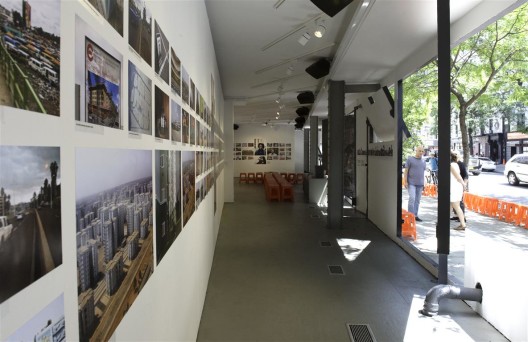“Facing East: Chinese Urbanism in Africa”
Storefront for Art and Architecture (97 Kenmare Street, New York), Jun 17–Aug 1, 2015
Storefront’s recent exhibition, “Facing East”, felt like an opportunity grandly missed. Its subject, the involvement of China in Africa—for example, through governmental loans, state-owned and private enterprise and aid relief—is a considerable and deepening feature of the global landscape. Although China is not the only nation to have embraced opportunities to trade with and invest in the African continent, and though loan and investment figures are difficult to verify, it is certainly Africa’s biggest trading partner. The last ten years have seen over a million Chinese workers move there to construct a presence manifest mainly through infrastructural projects such as highways, stadiums, hospitals, airports and dams, but extends more subtly, for example, into labor practices, communications, education and social interaction. As such, the situation is a complex and developing one riven with positive, negative and evolving effects.
In a strange titular twist, “Facing East” was based on part of the “Go West” project founded in 2009 (though the Storefront press release omitted to mention its name) which draws together a range of practitioners in different regions to investigate emerging megacities. Assumed still to be underway, “Go West” has been initiated and undertaken in person by the Shanghai-based architect Daan Roggeveen and the journalist Michiel Hulshof. Since 2012, they have conducted research in different African cities specifically to explore the increasing presence of Chinese urban models there. Their preliminary report was published last year in the magazine Urban China, though most visitors to the show were likely to have missed the copy lying among other publications on the table. Indeed, the potential depth of their investigation and the great interest, importance and intricacies of the socio-political and economic circumstances it seeks to investigate at a local level were wholly evaded by an exhibition which consisted mainly of poor quality photographs, unimaginatively presented. These depicted seemingly random scenes, for example of factory floors, building sites and trite shots of Chinese signage in African locales. Poor captioning did very little to elucidate the various photos or their wider context—one might have gleaned as much (or more) from a vague Google image search. Perhaps the most worthwhile element of the display was a timeline broadly charting the involvement of China in Africa for the last hundred years. Tacked to the back of the door in Storefront’s articulated wall, this was dog-eared and encouraged little attention from the casual visitor who, on the back of the press release alone, might not have realized that this is a case of increasing development rather than merely a recent phenomenon.
In short, those who had expected at least an engaging look into the subject of Chinese presence and socio-economic influence in Africa would have been sorely disappointed. In place of a well-researched and astute presentation, albeit in a small space, “the visitor finds himself in the same unstable position as Hulshof and Roggeveen during their research trips, and is forced to make associations between narratives, navigate existing and new relationships, and attempt to tie these together to comprehend the next chapter of globalization…”(from the press release). For this viewer, at least, the show barely filled a page.
